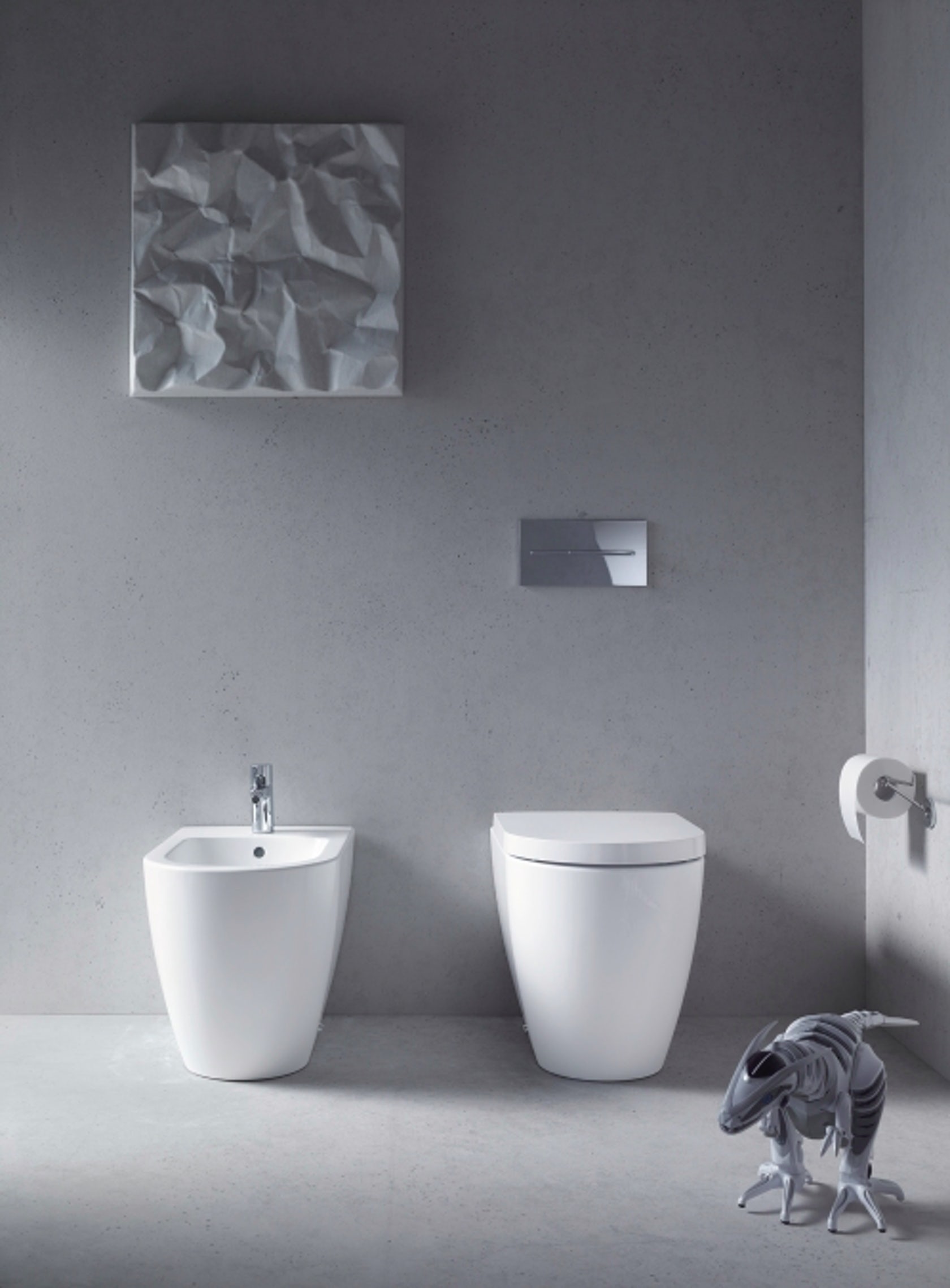The votes are in, and Architizer is thrilled to unveil the winners of the A+Product Awards! Register for Architizer's A+Product Awards Newsletter to receive future program updates.
Architectural products that self-clean are ingenious. Whether it’s a rainscreen or a compact surfacing material that sheds water, it’s incredibly important that exterior products exposed to the elements — as well as interior products subject to daily damage and dirt — have the power to combat these compelling forces.
One place where people may not realize the potential of such grime-fighting products is the bathroom — more specifically, the toilet. Modern ceramic technology can infuse antibacterial glazing onto today’s porcelain toilets, reducing the amount of bacteria a user might come into contact with throughout the day. It’s an inventive solution and makes keeping things clean infinitely easier for your clients.

Duravit developed an antibacterial glaze that coats the toilet’s ceramic and prevents harmful pathogens from penetrating the surface; via Duravit.
Duravit’s advanced HygieneGlaze 2.0, which is made up of a metal ion–based chemical composition, kills 90 percent of bacteria including E. coli six hours post-use. After a full 24 hours, 99.999 percent is gone, according to the global toilet manufacturer. It also arrests more bacterial growth compared to conventional ceramic glazing.
The proactive glaze, which is baked into the porcelain from the toilet’s rim to interior of the basin, does this through a toxic process called the oligodynamic effect. Metal ions and other active substances in the glazing capture any living cells, algae, molds and viruses hovering around the toilet. This can occur even in extremely low concentrations of these harmful pathogens.

Bacteria and any excess water swirling around the toilet will be effectively eliminated and dried within just hours of use; via Duravit.
This superpower isn’t something many of us consider a toilet capable of conquering, but we naturally welcome the possibility. Besides, the ramifications of specifying an ultra-hygienic toilet, say for a hospital setting, clinic, day care or nursing home, are major.
To better understand the importance of hyper-clean toilet technology, let’s look deeper into why its core material, porcelain, is still preferred in the making of the 21st-century toilet.
Porcelain is a simple composite of water and clay that’s been poured into a mold, finished, glazed and fired through a kiln. This fairly basic process is a cheap way to produce large industrial products like toilets. Porcelain itself is a vitreous ceramic that looks stunning and won’t scratch easily. It’s also waterproof, sturdy and highly rigid.

Duravit’s HygieneGlaze 2.0 is available in their ME by Starck collection.
Based on these facts alone, it’s no wonder that porcelain is the most trusted material to produce hard-wearing sanitary wares and hold the weight of our bodies over many years. Plus, porcelain is easy to manipulate. The attention and intricacy that goes into engineering a solid toilet is severely underestimated.
While the material is incredibly strong, it’s the non-porosity of porcelain that makes it a game-changer in terms of sanitation effectiveness. If liquid and bacteria is forced to stay on the surface of the toilet, then it won’t soak into the inner parts of the bowl and cause long-term damage. The key to keeping bacteria out is in the porcelain glaze, which physically stops anything from permeating the porcelain.

Duravit’s Darling New series features the ultra-hygienic glaze baked into the porcelain.
That’s why an invention like Duravit’s HygieneGlaze 2.0 takes their line of porcelain toilets to the next level. Right off the bat, it prevents bacteria from diving deeper into the toilet’s core while also making it super easy for users to clean. What’s more is that Duravit also offers a separate revelatory glaze on their toilets called WonderGliss. This smooth surface finish keeps toilets clean and lessens polluting deposits. The ceramic mix of natural raw materials like clay, kaolin, quartz and feldspar make it extra strong and glossy.
Duravit develops and tests these innovations through rounds and rounds of glazing and firing. This ensures that the toilets can withstand decades of use without massive bacteria buildups. That’s a huge deal for a building-product like a toilet, which is one of the most used tangible fixtures in a building. In addition to making it easier to physically clean the surface, these glazes give way to cleaner and healthier spaces. In projects where hygienic design is a top priority — as it should be in every case — bacteria-fighting toilets are unparalleled in terms of their value.
The votes are in, and Architizer is thrilled to unveil the winners of the A+Product Awards! Register for Architizer's A+Product Awards Newsletter to receive future program updates.
Top image: DuraStyle by Matteo Thun for Duravit









